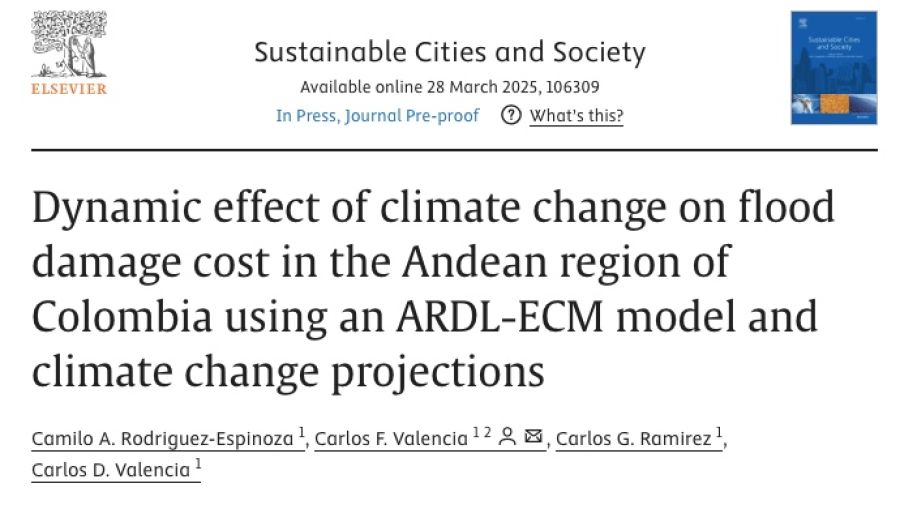Dynamic effect of climate change on flood damage cost in the Andean region of Colombia using an ARDL-ECM model and climate change projections

This study analyzes the economic impact of floods in the Andean region of Colombia and their relationship with climate change by examining meteorological variables such as precipitation, air temperature, and relative humidity. Using an Autoregressive Distributed Lag-Error Correction Model (ARDL-ECM), the research quantifies both the short-term and long-term effects of these variables on flood damage costs, employing monthly data from October 2006 to December 2023.
The results show a statistically significant relationship between meteorological conditions and flood damage costs. Specifically, precipitation has a positive and significant impact on flood costs in both the short and long run, whereas air temperature shows a negative impact. To enhance the analysis, climate change projections were incorporated using Global Climate Models (GCMs) and statistical downscaling techniques (SD). These projections indicate an increase in flood frequency and severity in the coming decades, reinforcing the urgency of climate adaptation and mitigation measures.
The study underscores the necessity of strengthening flood prevention policies, including investment in resilient infrastructure, improved early warning systems, and sustainable land-use planning. Additionally, the findings support broader climate policies aimed at reducing greenhouse gas emissions and deforestation, particularly in vulnerable areas like the Amazon.
Would you like to learn more about the impact of climate change on flood damage costs and how these effects can be projected into the future? This study was published in Sustainable Cities and Society, a high-impact journal in urban sustainability and resilience. You can read the full article at the following link: https://www.sciencedirect.com/science/article/abs/pii/S2210670725001866#d1e3829